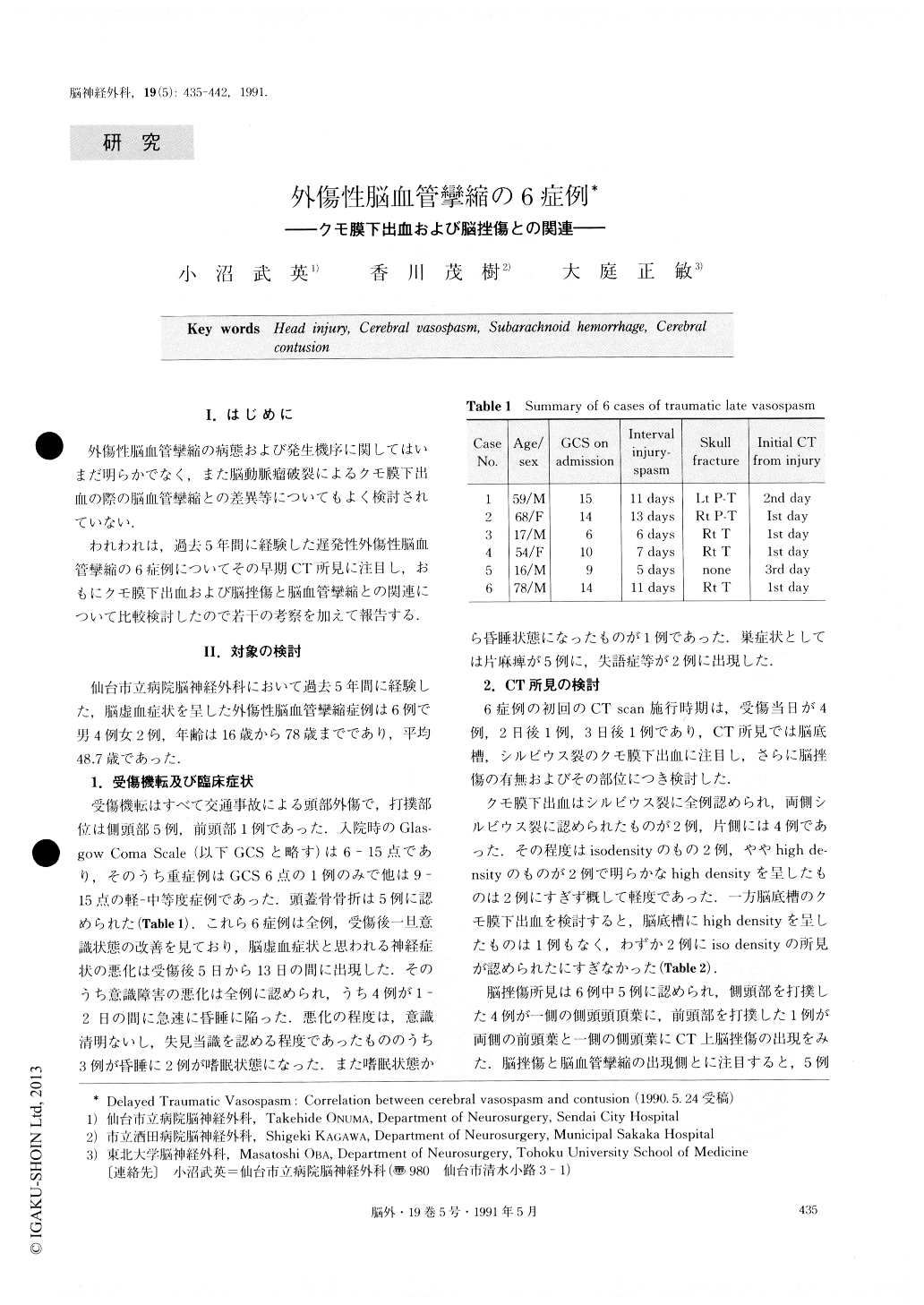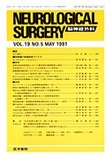Japanese
English
- 有料閲覧
- Abstract 文献概要
- 1ページ目 Look Inside
I.はじめに
外傷性脳血管攣縮の病態および発生機序に関してはいまだ明らかでなく,また脳動脈瘤破裂によるクモ膜下出血の際の脳血管攣縮との差異等についてもよく検討されていない.
われわれは,過去5年間に経験した遅発性外傷性脳血管攣縮の6症例についてその早期CT所見に注目し,おもにクモ膜下出血および脳挫傷と脳血管攣縮との関連について比較検討したので若干の考察を加えて報告する.
Abstract
The pathogenesis of delayed traumatic vasopasm is not yet fully understood. We present six cases of de-layed traumatic symptomatic vasospasm along with CT scan and angiographic findings. The cases ranging in age from 16 to 78 years all had head injury caused by traffic accidents.
The Glasgow coma scale on admission was 9 - 15 ex-cept in one severe case GCS 6. Initial CT scans were obtained on the day of injury in four patients and on the 2nd and 3rd clays in the other two cases respective-ly. There was no distinct subarachnoid hemorrrhage in the suprasellar cistern.
Subarachnoid hemorrhage in the Sylvian cistern was observed with particular care in all patients. However the severity of subarachnoid hemorrhage was mild (isodensity or slight high densisty by CT) in 4 cases. Brain contusions on CT scan were observed in the tem-poral and / or frontal region of 5 of 6 patients. Ischemic symtoms occurred during the period between 5 and 13 days after head injury.
The cerebral angiogram taken after the occurrence of these symptoms revealed spasms in all patients, the spasm being bilateral in 2 of them. Spasms were recog-nized on the main arteries at the base of the brain such as Cl, MI, M2 and A1. In 5 cases, the cerebral contu-sion and the spasm were located on the same side. An-giographically the vasospasms lasted 2 to 5 weeks. The prognosis based on the Glasgow outcome scale was good recovery in 3 patients and moderate disability in one. Two elderly patients with bilateral spasms were in a vegetative state and severe disability, respectively. From these results, the following conclusions were reached :
1) Traumatic vasospasm frequently occurring in se-vere cases of head trauma may also occur in relatively mild cases.
2) Traumatic vasospasms occur in cases of slight su- barachnoicl hemorrhage. The side affected by brain contusion corresponded well with that of the spasms.
3) Delayed traumatic vasospasms may be caused notonly by subaracnoid hemorrhage but also by brain con-tusion, that is, by mechanically injured vessels and che-mical substances deriving from the damaged tissues.

Copyright © 1991, Igaku-Shoin Ltd. All rights reserved.


